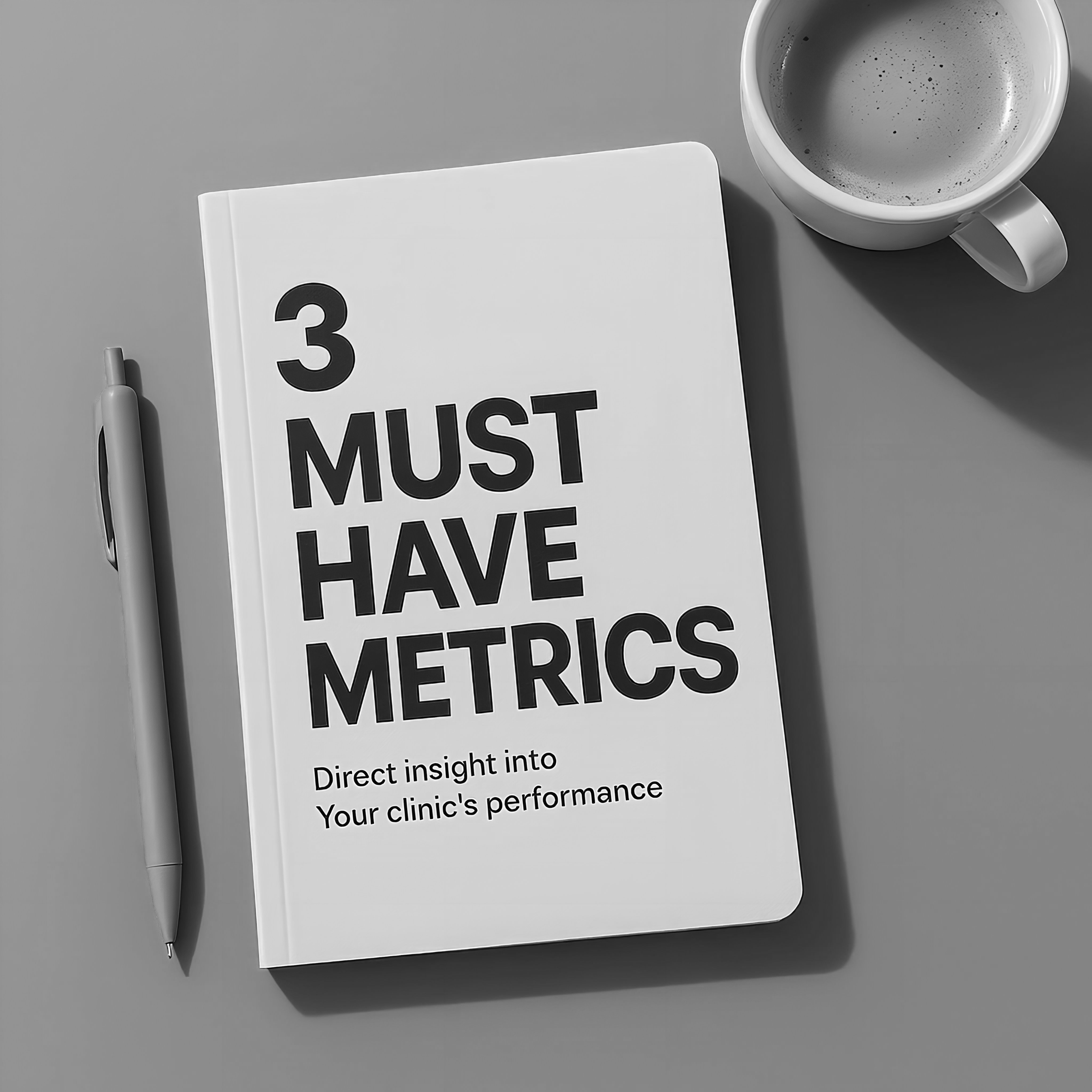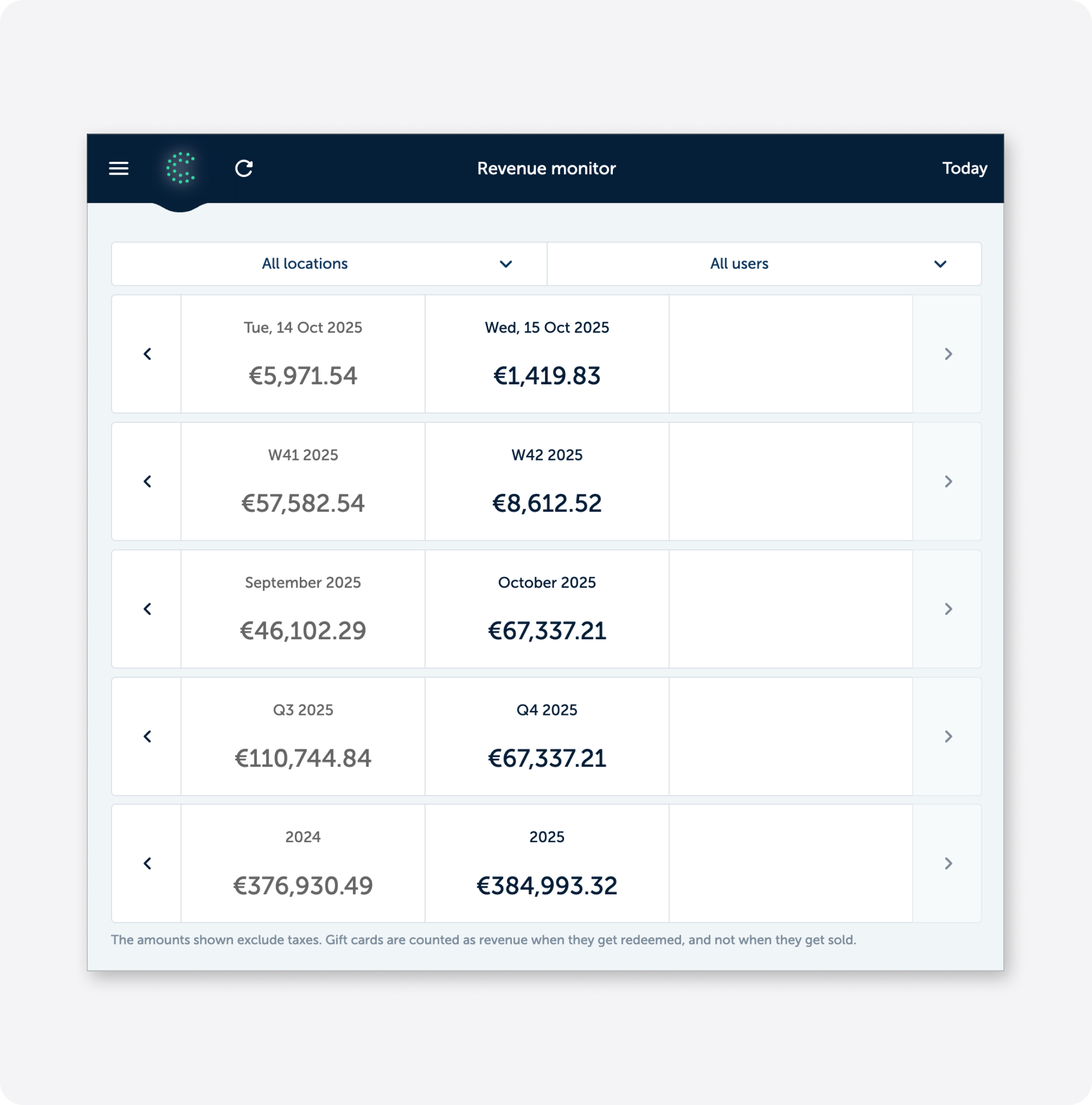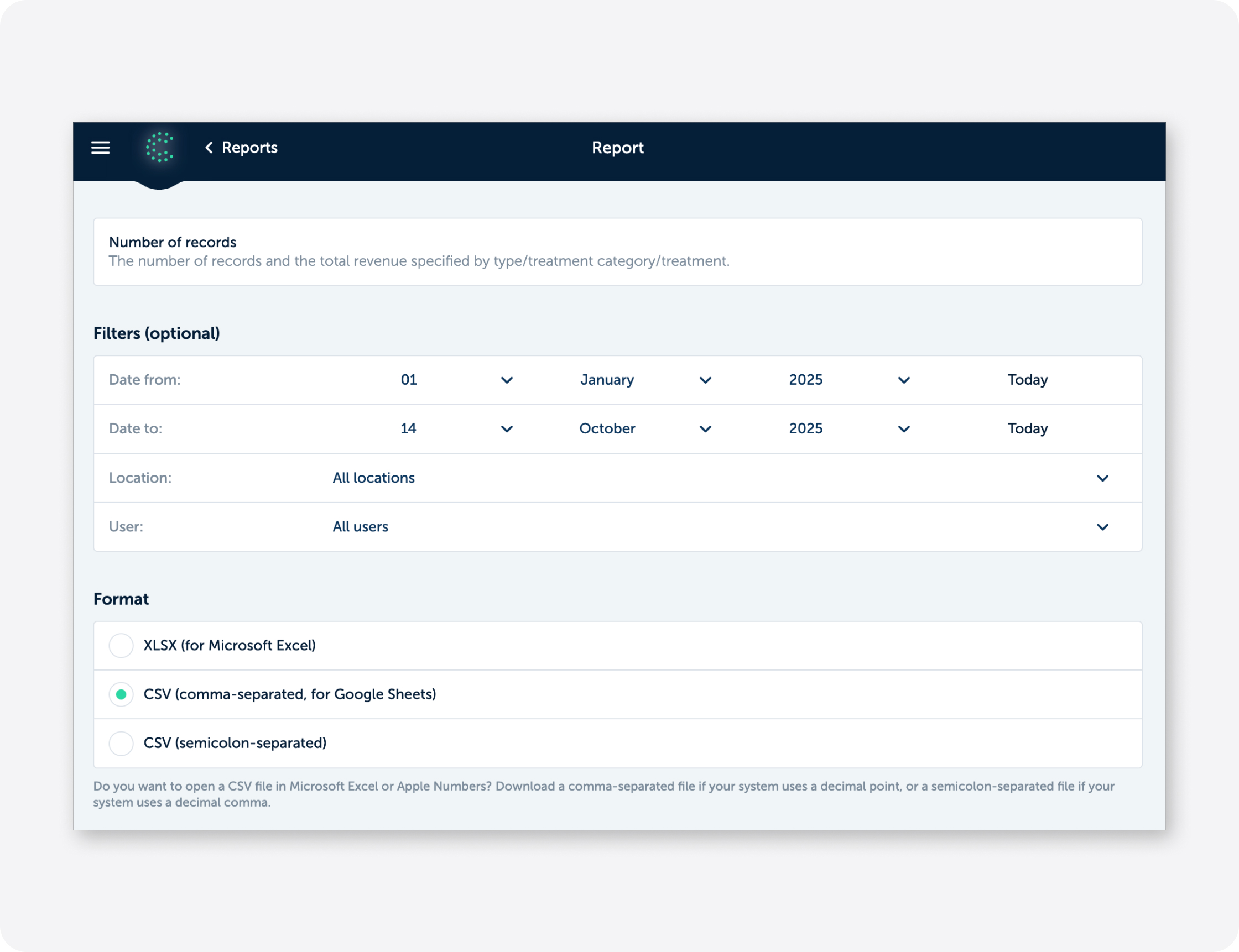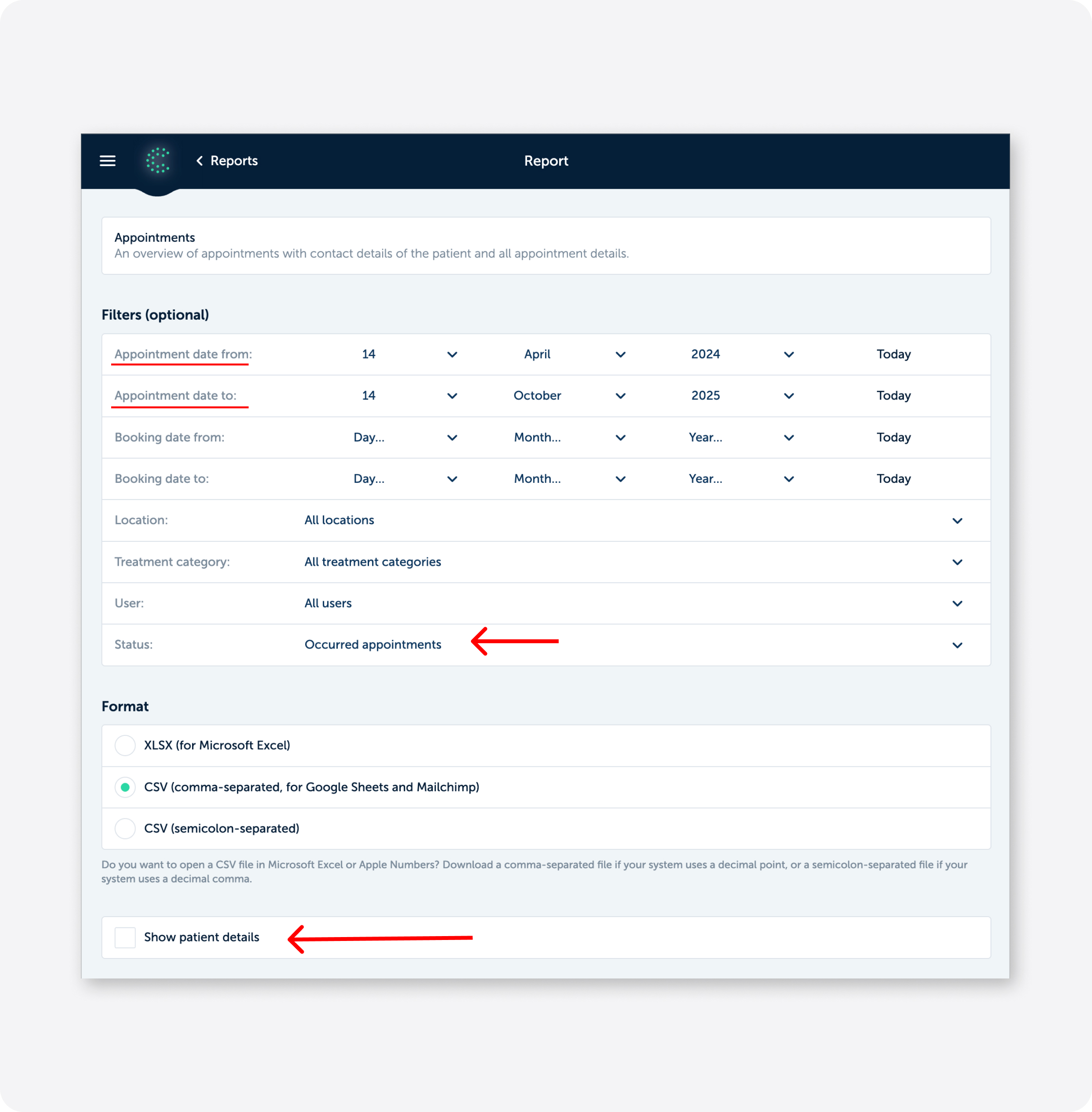Tracking your clinic’s performance metrics doesn’t have to be complex. In fact, with the right clinic analytics, you can get a clear picture of where your practice stands in just a few clicks. In this article, we’ll show you three essential medical practice KPIs every clinic owner and manager should know: the Revenue Monitor, Best-Selling Treatments, and Patient Retention Percentage.
You’ve probably heard about the Analytics API – and yes, it’s fantastic if you want to automate your data refresh or build a dashboard. But let’s be honest: sometimes you just want to run a clinic report without technical hassle quickly. And you can. We’ll show you how simple it is to use these three metrics, both through real-time dashboards and by downloading reports to Google Sheets or Excel.

1. Revenue Monitor: Real-Time Clinic Revenue Tracking
What is it?
The Revenue Monitor is a live clinic dashboard within Clinicminds that directly shows you how much revenue is coming in. You can filter by practitioner, location, day, month, quarter, or year. Want to know how this week performs compared to last week? Or how is Dr. Johnson doing compared to Dr. Smith? It’s all there.
Why is this important?
Timing is everything in medical practice management. If you only see at the end of the month that revenue is disappointing, you’re too late to make adjustments. With real-time clinic revenue tracking, you can take immediate action: allocate extra marketing budget, optimize appointments, or adjust capacity.
How do you use it?
No downloads needed. Log into Clinicminds, go to the Revenue Monitor, and set your filters. Boom – instant overview. Perfect for your weekly management meetings or to quickly check how the month is progressing.

2. Best-Selling Treatments: Identify Your Top Performers
What is it?
This treatment analysis report (technically: “Number of Records”) shows which treatments are performed most often and which generate the most revenue. Think: how many times was a Botox treatment sold this month? And what was the total revenue from your best-selling aesthetic treatments?

Why is this important?
Your marketing budget isn’t infinite. If you know which treatments perform best, you can launch targeted campaigns for them. Conversely, if an expensive treatment is barely selling, you know there’s work to be done. Do you need to better train your team? Or is the pricing not competitive?
How do you use it?
Run the report through Clinicminds (Reports > select period and filters). Download the file and open it in Google Sheets or Excel. Watch the short video to understand how you can set this up quickly with our clinic reporting template.
Note: Don’t just look at volume; also consider profit margins. A treatment that sells frequently but generates low profit is less valuable than a treatment with fewer sales but higher margins.
3. Patient retention percentage: measure clinic loyalty
Now that you know which treatments drive revenue, the next question is: are your patients coming back?
What is it?
The patient retention rate shows how many patients return after their first treatment. You can view this at the practitioner or clinic-wide level. We use a straightforward calculation method: how many patients who visited in period X returned in period Y?
Why is this important for your clinic?
High patient retention means patients are satisfied and trust your clinic. Low retention? Then revenue is leaking away. It’s cheaper to retain existing patients than to constantly recruit new ones through marketing. Plus: returning patients often spend more and refer others.
How do you use it?
Download the appointment report from Clinicminds. In our example, we pulled a report from 18 months back, but you can choose any timeframe you’d like to calculate your retention—it’s entirely up to you. Copy and paste the data you need into the provided retention calculation template (contact us, and we’ll send you the template immediately). You’ll see retention percentages per practitioner or for the entire clinic right away.
Important to know: Always interpret numbers within their context. A practitioner who’s only been employed for two months logically has a lower retention percentage than someone who’s been there for years. Also consider availability: if a practitioner works part-time, that affects the numbers. Include these variables in your clinic performance analysis—don’t draw conclusions based on just one number.

Formulas used in the template
Clinic Retention (18 months)
Clinic Retention = Unique patients with > 1 appointment / Total unique patients × 100%
Practitioner Retention (18 months)
Practitioner Retention = Unique patients with > 1 appointment at practitioner / Total unique patients at practitioner × 100%
